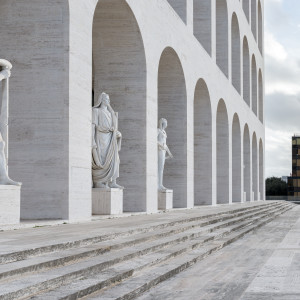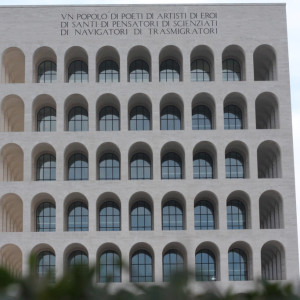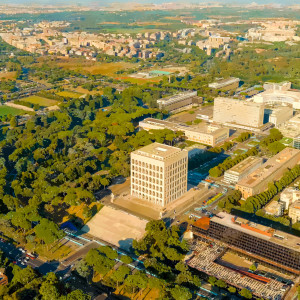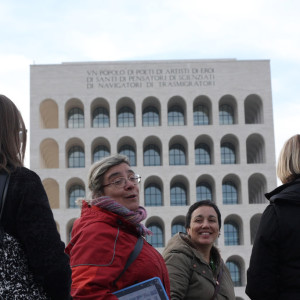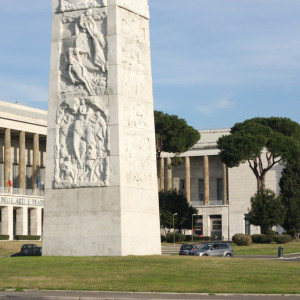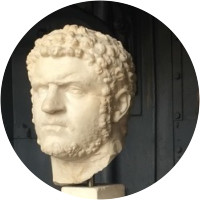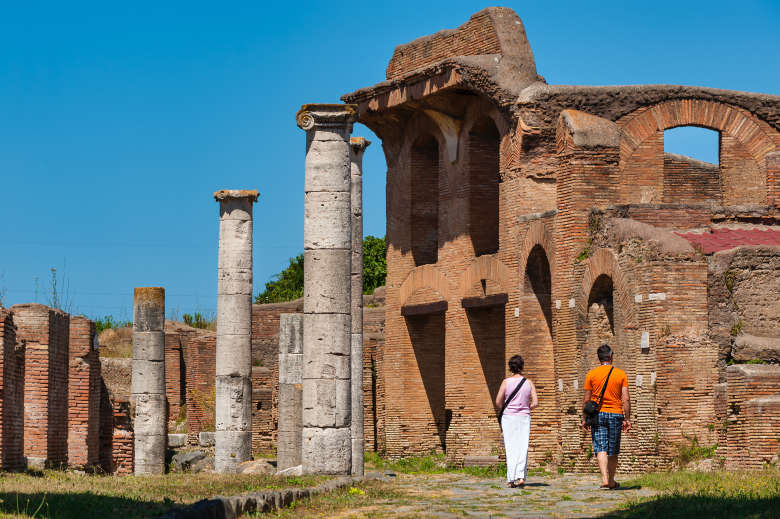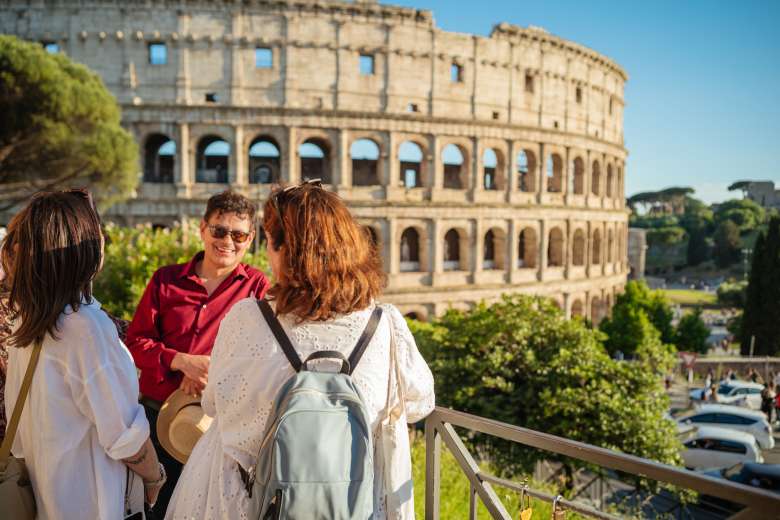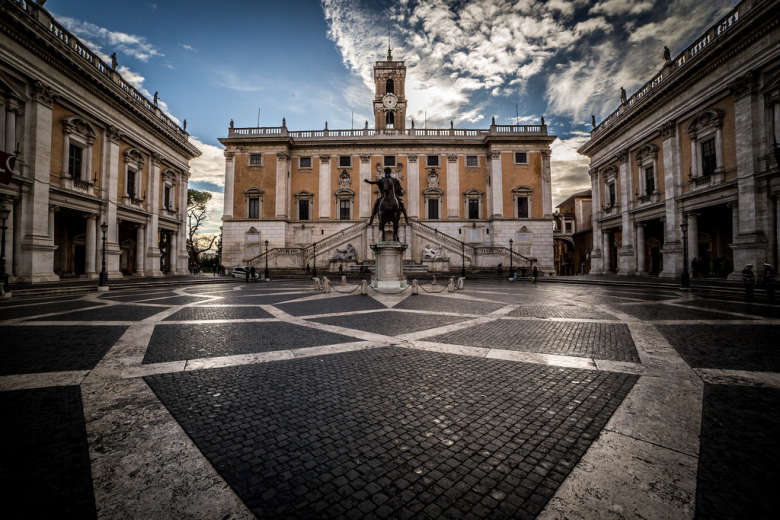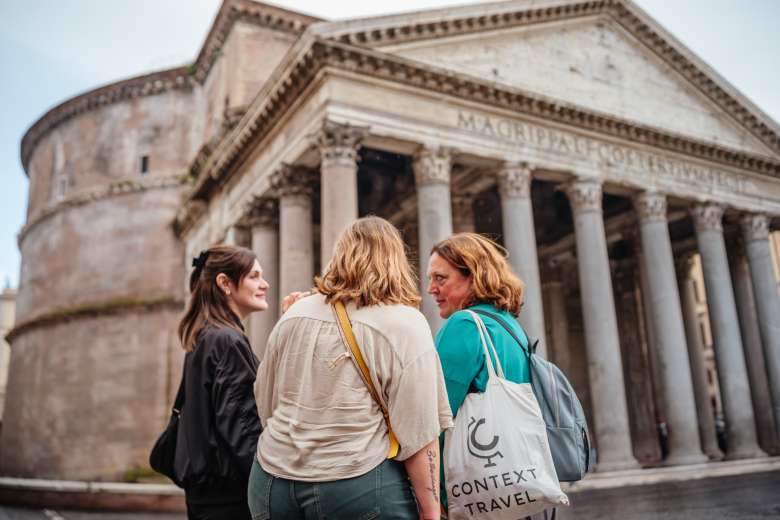Tour Details
Duration
3 hours
Product Type
Tour
Venues
- EUR Neighborhood
- Testaccio Neighborhood
- Colosseo Quadrato (Square Colosseum)
- Palazzo degli Uffici dell'Ente Autonomo
Select a date
Tour Description
Italy's 20th-century history is overlooked by both Italians and tourists alike. Throughout this 3-hour EUR Rome walking tour, your expert will lead you on a journey and reflection on the complex legacy of the fascist era through its surviving architecture. You will explore the EUR district, developed in the years of the Fascist regime to showcase Italy's power, modernity, and imperial ambitions, and now a unique example of 20th-century architecture and modern urban development. At the end of the Mussolini tour, you will have developed an understanding of this relatively underexplored period of history and the district of Rome.
Experts
Your journey begins in the working-class neighborhood of Testaccio, examining the post office building designed by Adalberto Libera, a standout of Rationalist architecture, characterized by its symmetry, geometrical structures, and low ornamentation.
You’ll then move to EUR, the planned site for the 1942 Universal Exposition. The project started in 1938 but was interrupted and never fully completed. After the war, the area was repurposed as a hub for government offices, businesses, and cultural activities.
The heart and focus of the district is the iconic Palazzo della Civiltà Italiana, or the Square Colosseum, an awe-inspiring structure that embodies the essence of Mussolini’s hubris for a modern, imperial Italy.
Guided by an expert in history or architecture, you’ll also explore the iconic structures of the Palazzo degli Uffici dell'Ente Autonomo and the Congressi Building, gaining a deep insight and understanding into this complex period of Italian history.
You’ll then move to EUR, the planned site for the 1942 Universal Exposition. The project started in 1938 but was interrupted and never fully completed. After the war, the area was repurposed as a hub for government offices, businesses, and cultural activities.
The heart and focus of the district is the iconic Palazzo della Civiltà Italiana, or the Square Colosseum, an awe-inspiring structure that embodies the essence of Mussolini’s hubris for a modern, imperial Italy.
Guided by an expert in history or architecture, you’ll also explore the iconic structures of the Palazzo degli Uffici dell'Ente Autonomo and the Congressi Building, gaining a deep insight and understanding into this complex period of Italian history.
- You’re interested in Italy’s complex history and how architecture reflects political ideologies, from Mussolini’s vision of imperial grandeur to the district’s modern-day repurposing
- You’re interested in knowing how Italy perceives its fascist legacy in modern architecture and politics
- You’re keen to explore an often-forgotten part of Italian history and explore something most tourists don’t see
- Testaccio Neighborhood
- EUR Neighborhood
- Colosseo Quadrato (Square Colosseum)
- Palazzo degli Uffici dell'Ente Autonomo
Tickets
You are pre-paid for the tour. Please note, there is a subway ride to the EUR district. It is a good idea to have some local currency on hand for this.
Transportation
Can I be picked up from my hotel?
Yes, please check the “Private Car from Your Hotel in Rome” box at checkout and enter your hotel details.
Additional Trip-Planning Resources
If you are looking to learn more about Rome prior to a visit, check out our Pre-Trip Talks and our How Centuries of Urban Development Shaped Rome with an Architecture Professor.
Is this tour appropriate for children?
This tour includes discussions of sensitive historical topics such as ultranationalism and dictatorship, which may not be suitable for younger children. It’s more appropriate for older children or teenagers who have an interest in history or architecture. If your children are particularly curious about historical or political topics, they may find it engaging. However, younger children might not connect with the content. If you have specific concerns, feel free to reach out, and we can help determine if it's the right fit for your family.
Will we go inside any of the buildings on the tour?
While the tour will stop to admire and discuss the architecture of various buildings, such as the Square Colosseum and Palazzo degli Uffici dell'Ente Autonomo, we do not go inside most of these structures. The focus is on the architectural design and the history behind these landmarks.
We understand that some of our valued guests may have mobility concerns, and we want to ensure you have a comfortable and enjoyable experience throughout your tour. If there are any accessibility concerns that your tour guide will need to be aware of, please let our team know at the time of booking.
Is this tour wheelchair-friendly?
Yes, for the most part, this tour is wheelchair accessible. Our guides have experience in giving tours to guests of all abilities. Our team will be happy to make adjustments as needed.
Book with confidence — see Context's flexible cancellation policy here.
Where You'll Start
–
46 Reviews
Reviews can only be left by Context customers after they have completed a tour. For more information about our reviews, please see our FAQ.
Paolo is an excellent tour guide. He is very well informed and friendly. I would recommend him wholeheartedly.
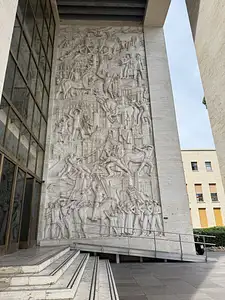
Keith
Reviewed on:
Sep 22, 2025
The tour was wonderful. Liz was an expert. Lots of interesting details and very knowledgeable.
Hagen
Reviewed on:
Aug 31, 2025
Regarding question above, we have had both excellent experiences with Contexttravel guides and ones that were just fair. The guide was nice, prompt and had good subject matter knowledge but her presentations skills were not the best. She giggles a lot and often seemed exasperated. We had just used another private guide in Rome who was excellent so the contrast was notable. I would say that Contexttravel is worth the higher prices charged when the guide is outstanding. When not, it doesn’t feel like good value for money.
Andrew
Reviewed on:
May 29, 2025
